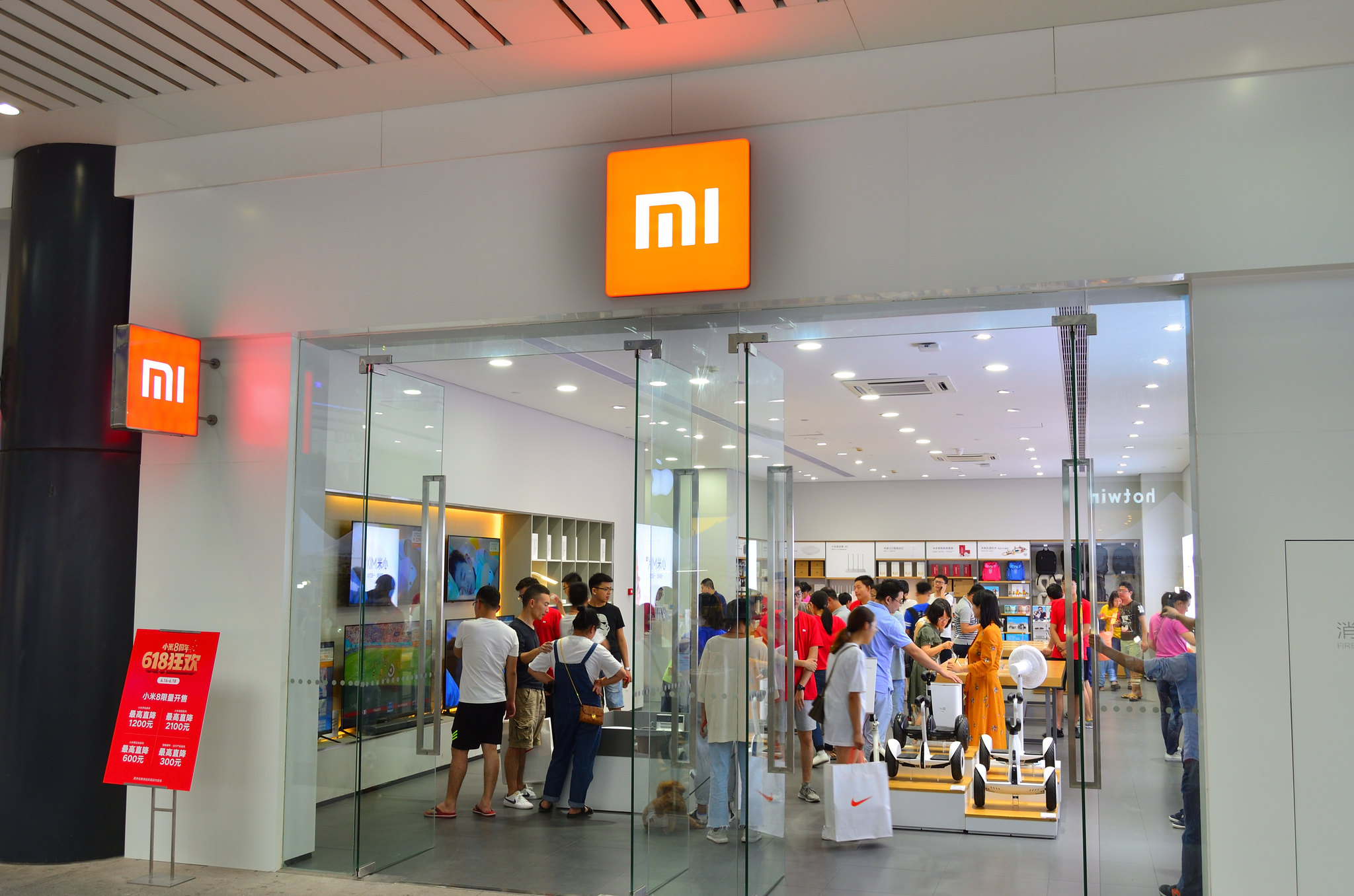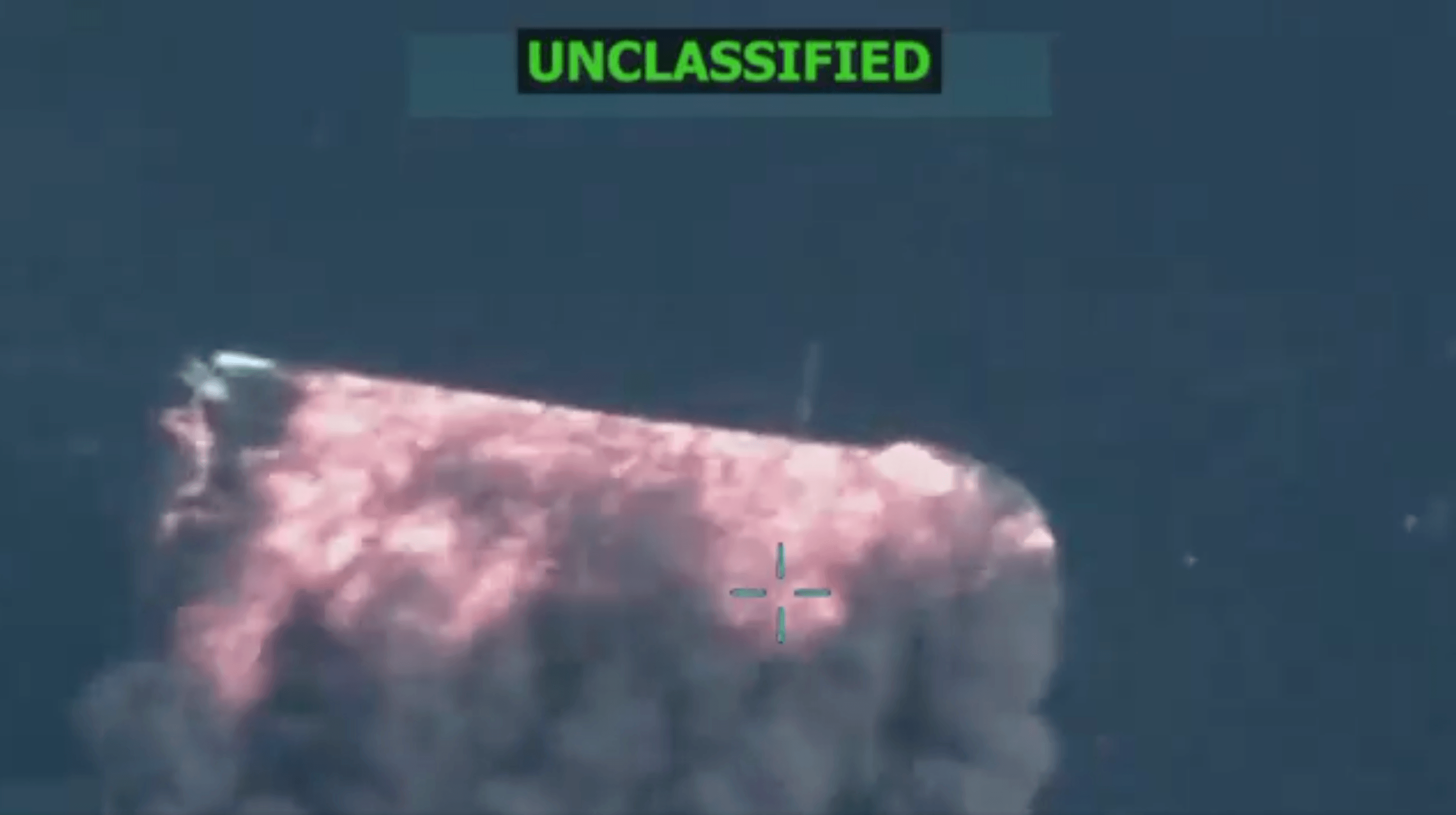Communist Chinese Military Companies and Section 1237: A Primer
An in-depth review of the evolution of Section 1237 of the National Defense Authorization Act for fiscal year 1999, and the government’s efforts to tackle the issue of “Communist Chinese military companies."

Published by The Lawfare Institute
in Cooperation With

In recent months, two Chinese companies have filed lawsuits contesting their designation as “Communist Chinese military companies” (CCMCs) by the Department of Defense. Xiaomi and Luokung Technology have filed proceedings in the U.S. District Court for the District of Columbia against the Defense and Treasury departments for alleged violations of their due process rights. On March 12, Judge Rudolph Contreras of the D.C. District Court granted Xiaomi a preliminary injunction against their designation.
These companies have been “blacklisted” under Section 1237 of the Strom Thurmond National Defense Authorization Act (NDAA) for fiscal year 1999, as amended. This post provides background on Section 1237, examines the current state of play, and assesses the ongoing legal battle between the U.S. government and the companies over the CCMC label and its accompanying consequences.
Background and Text of Section 1237
NDAA for Fiscal Year 1999
Section 1237 was passed against a backdrop of growing concerns about China in the late 1990s. The theme of the House Committee on National Security report on the 1999 NDAA was the threat of an ascendant China. Congress was considering the bill as the 10th anniversary of the Tiananmen Square massacre approached and President Clinton was renewing engagement with China. Leaning heavily on the 1997 Quadrennial Defense Review, the committee indicated that the bill was designed to help the national security community “prepare now for an uncertain future that may include ‘significant’ future threats from a rising China.”
Then-Sens. Tim Hutchinson and Spencer Abraham introduced Section 1237 as an amendment to a Senate resolution that eventually became the 1999 NDAA. In his remarks on the amendment, Hutchinson indicated that it was designed to address “the growing threat that the People’s Republic of China poses to the citizens of the United States.” The amendment, Hutchinson said, would help stem the tide of Chinese companies “funding [an] arms buildup in China[,]” provide the president with extra authority to act against Chinese entities, and allow Americans to know whether they were “funding the People’s Liberation Army.”
In line with Hutchinson’s stated goals, Section 1237(a)(1) authorizes the president to use his powers under the International Emergency Economic Powers Act (IEEPA)—without declaring a national emergency—against companies falling under subsection (b) of the provision. Subsection (b) seeks to identify companies working for the Chinese military. Specifically, Section 1237(b)(1) instructs the secretary of defense to “make a determination of those persons operating directly or indirectly in the United States or any of its territories and possessions that are Communist Chinese military companies” in the form of a published list.
Originally, entities were designated as CCMCs under Section 1237(b)(4) if they met two criteria:
- they were “owned or controlled by the People’s Liberation Army” and
- they were “engaged in providing commercial services, manufacturing, producing, or exporting.”
Section 1237(c) confirms that the Chinese intelligence services are encompassed within the meaning of “the People’s Liberation Army” (PLA).
After the House accepted the Senate’s amendments, President Clinton signed the 1999 NDAA into law—but with a signing statement attached. While acknowledging that the bill “as a whole” was “beneficial to the national defense,” Clinton went on to highlight numerous concerns. Though he did not mention Section 1237 by name, Clinton took issue with “several provisions” that “could be interpreted to intrude unconstitutionally on the President’s authority to conduct foreign affairs and to direct the military as Commander-in-Chief” and indicated he would “interpret these provisions in light of [his] constitutional responsibilities.” Given that Section 1237 directed the secretary of defense to designate certain Chinese companies as being “owned or controlled by the People’s Liberation Army[,]” this may have been one of the “several provisions” Clinton was referring to.
NDAAs for Fiscal Years 2001 and 2005
In any case, the Clinton administration never published the called-for list. This stance continued even after the administration received letters in July and September 1999 from members of Congress asking why it had not done so. The administration didn’t publish the list even after then-Secretary of Defense William Cohen assured then-Rep. Christopher Cox in a letter dated Aug. 13, 1999, that the Defense Department would comply (though he also cautioned that such a requirement might be inconsistent with existing law regarding civil liberties protections for U.S. persons).
This led to the revision of Section 1237 through the Floyd D. Spence National Defense Authorization Act for fiscal year 2001. Then-Rep. Tillie Fowler introduced an amendment indicating that it was the “sense of Congress that the Secretary of Defense has not complied with the requirements of section 1237(b)[.]” However, during the conference committee process, this “sense of Congress” was removed and replaced with a Senate amendment that would require the Defense Department to “report” rather than “publish” the list, and to submit the report to the armed services committees of both houses of Congress (along with certain executive branch officials) by March 1, 2001. The amendment also changed the requirement to update the list “regularly” under the original version into a mandate to update the list annually. This version of the amendment became Section 1233 of the 2001 NDAA.
Section 1237 was amended a final time through the Ronald W. Reagan National Defense Authorization Act for fiscal year 2005. The revision, which then-House Armed Services Committee Chairman Duncan Hunter introduced as part of the original House draft of the bill, enlarged the number of companies covered by the original version of Section 1237. Specifically, Section 1222 of the 2005 NDAA dramatically expanded the universe of entities that could be designated as CCMCs to include those “affiliated with” not only the PLA but also any ministry of the People’s Republic of China. In addition, it now covered any organization “owned or controlled by any entity affiliated with the defense industrial base” of China.
Letters From 2019 and 2020
Despite the Senate’s publication concession in 2000, the CCMC report never materialized. Indeed, the NDAA provision lay dormant through the Bush and Obama administrations, until it was finally picked up in September 2019 by Sens. Tom Cotton and Chuck Schumer, and Reps. Michael Gallagher and Ruben Gallego. The members of Congress wrote a letter to then-Defense Secretary Mark Esper referencing Section 1237 and asking Esper to release a list that complied with the provision.
While the letter does not explicitly say the Department of Defense never issued a report naming CCMCs, it does allude to this possibility by asking Esper when the list was last updated. Given several factors, it seems unlikely that the members of Congress would have to ask that question unless a report had never before been issued: Section 1237(b) as amended requires the Defense Department to update the list yearly and submit it to the armed services committees, Cotton is a member of the Senate Armed Services Committee, and both Gallagher and Gallego are members of the House Armed Services Committee.
Indeed, in his June 2020 letter of reply, then-acting Deputy Defense Secretary David Norquist provided a list of companies but did not directly answer the question. Instead, he simply noted that, on becoming aware of the requirement set up by the 106th Congress, his staff “produced an initial list of companies that meet the ... criteria in section 1237” (emphasis added), again implying that no such list had been created before 2019.
The CCMC List
After its initial response to Cotton, the Defense Department updated its list with four more tranches of company names. The complete list of 44 entities is composed primarily of technology companies, though it also includes aviation, construction, railway and shipbuilding companies (curiously, the list includes both the China Shipbuilding Industry Corporation and the China State Shipbuilding Corporation, even though the two merged in November 2019, taking the latter company’s name).
Companies that have received the most attention are Huawei, Hikvision, the China National Offshore Oil Corporation and the Semiconductor Manufacturing International Corporation. Other companies of note include the Aviation Industry Corporation of China, a state-owned enterprise (SOE) that is apparently the “sole supplier of military aircraft to the PLA”; and the China Communications Construction Company, an SOE that has been identified as being involved in the creation of the artificial islands in the South China Sea used by the Chinese military.
But beyond just listing these companies as CCMCs, on Nov. 12, 2020, the Trump administration declared a national emergency under the IEEPA (with reference to Section 1237) through Executive Order 13959. Interestingly, while Section 1237(a)(1) permits the president to invoke his authority under the IEEPA without declaring a national emergency, the Trump administration made it clear that its authority to act through the executive order was based on such a declaration. It is likely that the administration wanted to maintain as much flexibility as possible, especially because Congress did not include the president’s “authorities related to importation” in Section 1237(a)(1)’s grant of authority. This desire for flexibility is consistent with invocations of the IEEPA by other administrations.
Under the executive order, Trump prohibited “any transaction in publicly traded securities, or any securities that are derivative of, or are designed to provide investment exposure to such securities” involving then-identified CCMCs as of Jan. 11, 2021. For those CCMCs designated after Nov. 12, the ban would extend to them 60 days after their designation. On Jan. 13, 2021, Trump signed Executive Order 13974, which amended the earlier order by prohibiting U.S. persons from possessing CCMC-owned securities for longer than 365 days after the CCMC received its designation as such. The suits by Xiaomi and Luokung followed soon after.
While the Biden administration has indicated that it wants to recalibrate its relationship with China based on a more clear-eyed and comprehensive strategy, it has not moved to revoke either of the Trump administration’s executive orders. Nor is it likely to, given the current political climate surrounding U.S.-China relations.
Overview of Current CCMC Litigation
In total, five causes of action are at play in the two lawsuits filed by Xiaomi and Luokung Technology Corp., some of which overlap between the companies.
“Arbitrary and Capricious”
Both Xiaomi and Luokung allege that their designation under Section 1237 is “arbitrary and capricious, an abuse of discretion, and otherwise not in accordance with law in violation of the Administrative Procedure Act, 5 U.S.C. § 551 et seq.” This is the primary claim of both companies, and the main focus of the D.C. District Court’s decision granting Xiaomi a preliminary injunction. The companies stress that they are not CCMCs under the statutory definition in Section 1237 and, therefore, restrictions on the trading of their shares under the executive orders are unlawful. This APA claim can be divided into two buckets. The first is definitional, and the second is evidentiary.
The definitional issue is more problematic for the U.S. government, because it impacts the evidentiary one. In applying the statute, the D.C. District Court adopted the definition put forward by Xiaomi as the plain meaning of the words “affiliated with,” meaning that an entity is “affiliated with” another if it is “effectively controlled by another or associated with others under common ownership or control[.]” The court explained that Xiaomi’s definition is similar to those put forward by Defense Department regulations, a Justice Department Office of Legal Counsel opinion, and “numerous statutes.” Based on this definition, the court determined that the Defense Department exceeded its authority under Section 1237 in designating Xiaomi as a CCMC, because it has not yet sufficiently proved that Xiaomi is “affiliated with” the Chinese state.
This brings us to the evidentiary issue. The vast majority of the companies named by the Defense Department are SOEs. While SOEs are likely to be considered as being “owned” by the Chinese state, Xiaomi and Luokung are not SOEs. Therefore, in the case of Xiaomi and Luokung, the entire CCMC controversy turns on whether the government can produce enough evidence that these companies are “affiliated with” the PLA, a ministry of the People’s Republic of China or an entity within China’s “defense industrial base.”
According to the U.S. government, the case for labeling Xiaomi as a CCMC being “affiliated with” the Chinese state seems to rest primarily on just two facts: that Xiaomi CEO Lei Jun received the “Outstanding Builder of Socialism with Chinese Characteristics” award from China’s Ministry of Industry and Information Technology (which oversees China’s technology and industrial policies); and that Xiaomi “plans to invest 50 billion yuan, equivalent to $7.7 billion, over five years into 5G technology and artificial intelligence.”
Xiaomi contends that this is very thin evidence on which to base their designation. And the D.C. District Court seems to agree. Judge Contreras of the D.C. District Court granted Xiaomi a preliminary injunction on the basis that it is likely to succeed on the merits primarily because of the Defense Department’s reliance solely on the two pieces of information.
It remains to be seen whether the government will provide more evidence to buttress its action against Xiaomi, or if it will have more substantial evidence against Luokung. While agency action is usually granted a high level of deference by the courts under either the “substantial evidence” standard or the “arbitrary or capricious” standard (especially in the area of international sanctions), it doesn’t seem that the D.C. District is totally convinced.
Lack of Proper Procedure
Luokung claims the Defense Department exceeded its authority by “failing to follow procedures in Section 1237 in violation of the APA.” But it is unclear what “procedures” Luokung is referring to. There are no procedures listed under Section 1237, other than that the Defense Department is to “make a determination” of which companies qualify as CCMCs, and then to provide a report to certain congressional committees and executive branch officials naming them as such. Indeed, Luokung is alone in raising this procedural issue: Xiaomi did not advance this claim in its complaint; therefore, Contreras did not take it up in his order granting Xiaomi a preliminary injunction.
Lack of Consultation With Other Executive Branch Officials
Luokung declares that the Department of Defense did not consult with other agencies as required by Section 1237 and, therefore, Luokung’s designation is in excess of the department’s authority. But Luokung provides no evidence of this. Xiaomi also did not make this claim, nor did Contreras address it in his order.
Lack of Fair Notice
Luokung also states that Section 1237 fails to provide fair notice of what a CCMC actually is and, therefore, in conjunction with the restrictions that apply to CCMCs under the EOs, the provision is unconstitutionally vague. Both Luokung and Xiaomi make an additional notice claim, which focuses on the fact that the U.S. government did not provide the companies notice that they were being considered for designation as CCMCs.
In terms of Luokung’s claim, Section 1237 explains exactly what a CCMC is: a company that is “owned or controlled” by the PLA and that engages in certain commercial activities. Courts would likely interpret the words “owned,” “controlled” and “affiliated” based on their plain meaning. As noted above, the D.C. District Court has adopted Xiaomi’s definition of these words. Thus, it is not likely that Luokung’s claim of unconstitutional vagueness would survive judicial review, because the court has determined that the words can be defined according to their plain meaning. The second notice claim made by Xiaomi and Luokung will also likely fail because, as Bobby Chesney explained in his piece on TikTok’s suit against the government (which used this same cause of action), “no ex ante notice is required” in the context of foreign sanctions.
General License 1A
Finally, Luokung requests declaratory relief confirming that General License 1A applies to it. General License 1A is a regulation promulgated by the Office of Foreign Assets Control (OFAC) permitting securities trading to go forward for companies “of an entity whose name closely matches, but does not exactly match, the name of a Communist Chinese military company” until May 27, 2021. Luokung’s argument seems to turn on the fact that instead of abbreviating the word “corporation”—as Luokung does in its corporate documents—the CCMC list spells out the entire word. However, this claim is moot. On March 9, 2021, the Defense Department redesignated Luokung as a CCMC under the correct name, pushing the threat of sanctions out to May 8, 2021, under the terms set out by the executive orders, and allowing Luokung to trade securities—for now.
Publication of the CCMC List
As an additional matter, Xiaomi makes the curious claim that Section 1237 “requires” the Defense Department to publish the CCMC list. While the Defense Department did in fact publish the list, it is not required to do so. As explained above, Section 1233 of the 2001 NDAA amended Section 1237 to remove the requirement that the list be published. Instead, it merely requires that the Defense Department deliver a copy of the list to the two armed services committees and certain executive branch officials.
Conclusion
On balance, Xiaomi and Luokung normally wouldn’t be very successful in their suits against the U.S. government because, as I have explained elsewhere:
there have been virtually no substantive limits placed on a president acting in a national emergency as a result of the IEEPA’s passage. On the contrary, federal appellate courts have interpreted the IEEPA as a codification of “Congress’s intent to confer broad and flexible power upon the President to impose and enforce economic sanctions against nations that the President deems a threat to national security interests.”
In almost every previous case involving the IEEPA, the president has come out as the winner—from bringing criminal charges against a defendant who provided combatant services to wartime enemies, to fining people for acting as a “human shield” to draw attention to overseas conflicts, to freezing a domestic nonprofit organization’s assets while it was under investigation for alleged terrorist activities.
It is true that some courts—like the U.S. District Court for the Northern District of Ohio in Kindhearts for Charitable Humanitarian Development, Inc. v. Geithner and the U.S. Court of Appeals for the Ninth Circuit in Al Haramain Islamic Found., Inc. v. U.S. Department of the Treasury—have upheld Fourth Amendment challenges to IEEPA sanctions. But the D.C. District Court has consistently struck down or carved out exceptions to such claims. Others, like the district judges in the WeChat and TikTok cases, have shown sympathy toward either free speech claims (WeChat) or specific exceptions written into the IEEPA (TikTok). But, like Xiaomi’s and Luokung’s suits, these social media cases are still in their preliminary stages. And to be clear, neither Xiaomi nor Luokung have raised Fourth Amendment, free speech or IEEPA exception claims to challenge the government’s actions.
It remains to be seen whether Xiaomi and Luokung will find redress on the merits from their designation as CCMCs, and from the sanctions levied against them. But they do have another option if litigation doesn’t work out—they can convince the Biden administration to rescind Trump’s executive orders.
Correction: An earlier version of this article claimed that Luokung advanced a "takings clause" claim under the Fifth Amendment of the U.S. Constitution. This has been revised to reflect that Luokung instead raised a Due Process Clause claim under the Fifth Amendment.





